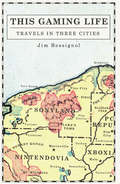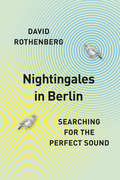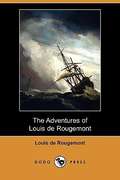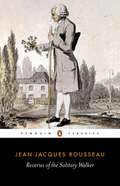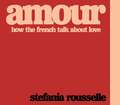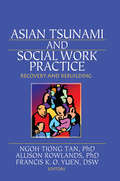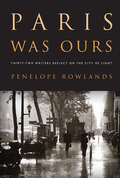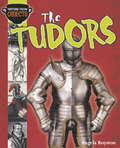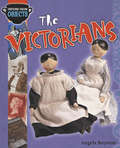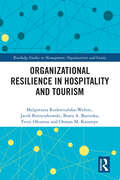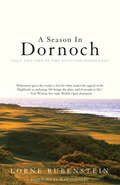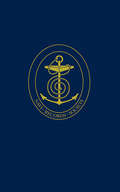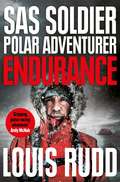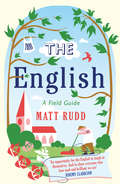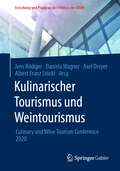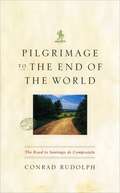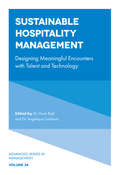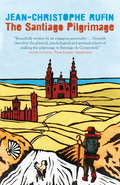- Table View
- List View
This Gaming Life: Travels in Three Cities
by Jim Rossignol"In May 2000 I was fired from my job as a reporter on a finance newsletter because of an obsession with a video game. It was the best thing that ever happened to me.” So begins this story of personal redemption through the unlikely medium of electronic games. Quake, World of Warcraft, Eve Online, and other online games not only offered author Jim Rossignol an excellent escape from the tedium of office life. They also provided him with a diverse global community and a job—as a games journalist. Part personal history, part travel narrative, part philosophical reflection on the meaning of play, This Gaming Life describes Rossignol’s encounters in three cities: London, Seoul, and Reykjavik. From his days as a Quake genius in London’s increasingly corporate gaming culture; to Korea, where gaming is a high-stakes televised national sport; to Iceland, the home of his ultimate obsession, the idiosyncratic and beguiling Eve Online, Rossignol introduces us to a vivid and largely undocumented world of gaming lives. Torn between unabashed optimism about the future of games and lingering doubts about whether they are just a waste of time, This Gaming Life also raises important questions about this new and vital cultural form. Should we celebrate the “serious” educational, social, and cultural value of games, as academics and journalists are beginning to do? Or do these high-minded justifications simply perpetuate the stereotype of games as a lesser form of fun? In this beautifully written, richly detailed, and inspiring book, Rossignol brings these abstract questions to life, immersing us in a vibrant landscape of gaming experiences. “We need more writers like Jim Rossignol, writers who are intimately familiar with gaming, conversant in the latest research surrounding games, and able to write cogently and interestingly about the experience of playing as well as the deeper significance of games.” —Chris Baker, Wired “This Gaming Life is a fascinating and eye-opening look into the real human impact of gaming culture. Traveling the globe and drawing anecdotes from many walks of life, Rossignol takes us beyond the media hype and into the lives of real people whose lives have been changed by gaming. The results may surprise you.” —Raph Koster, game designer and author of A Theory of Fun for Game Design “Is obsessive video gaming a character flaw? In This Gaming Life, Jim Rossignol answers with an emphatic ‘no,’ and offers a passionate and engaging defense of what is too often considered a ‘bad habit’ or ‘guilty pleasure.’” —Joshua Davis, author of The Underdog “This is a wonderfully literate look at gaming cultures, which you don't have to be a gamer to enjoy. The Korea section blew my mind.” —John Seabrook, New Yorker staff writer and author of Flash of Genius and Other True Stories of Invention digitalculturebooks is an imprint of the University of Michigan Press and the Scholarly Publishing Office of the University of Michigan Library dedicated to publishing innovative and accessible work exploring new media and their impact on society, culture, and scholarly communication. Visit the website at www.digitalculture.org.
Nightingales in Berlin: Searching for the Perfect Sound
by David RothenbergA celebrated figure in myth, song, and story, the nightingale has captivated the imagination for millennia, its complex song evoking a prism of human emotions,—from melancholy to joy, from the fear of death to the immortality of art. But have you ever listened closely to a nightingale’s song? It’s a strange and unsettling sort of composition—an eclectic assortment of chirps, whirs, trills, clicks, whistles, twitters, and gurgles. At times it is mellifluous, at others downright guttural. It is a rhythmic assault, always eluding capture. What happens if you decide to join in? As philosopher and musician David Rothenberg shows in this searching and personal new book, the nightingale’s song is so peculiar in part because it reflects our own cacophony back at us. As vocal learners, nightingales acquire their music through the world around them, singing amidst the sounds of humanity in all its contradictions of noise and beauty, hard machinery and soft melody. Rather than try to capture a sound not made for us to understand, Rothenberg seeks these musical creatures out, clarinet in tow, and makes a new sound with them. He takes us to the urban landscape of Berlin—longtime home to nightingale colonies where the birds sing ever louder in order to be heard—and invites us to listen in on their remarkable collaboration as birds and instruments riff off of each other’s sounds. Through dialogue, travel records, sonograms, tours of Berlin’s city parks, and musings on the place animal music occupies in our collective imagination, Rothenberg takes us on a quest for a new sonic alchemy, a music impossible for any one species to make alone. In the tradition of The Hidden Life of Trees and The Invention of Nature, Rothenberg has written a provocative and accessible book to attune us ever closer to the natural environment around us.
Nightingales in Berlin: Searching for the Perfect Sound
by David RothenbergA celebrated figure in myth, song, and story, the nightingale has captivated the imagination for millennia, its complex song evoking a prism of human emotions,—from melancholy to joy, from the fear of death to the immortality of art. But have you ever listened closely to a nightingale’s song? It’s a strange and unsettling sort of composition—an eclectic assortment of chirps, whirs, trills, clicks, whistles, twitters, and gurgles. At times it is mellifluous, at others downright guttural. It is a rhythmic assault, always eluding capture. What happens if you decide to join in? As philosopher and musician David Rothenberg shows in this searching and personal new book, the nightingale’s song is so peculiar in part because it reflects our own cacophony back at us. As vocal learners, nightingales acquire their music through the world around them, singing amidst the sounds of humanity in all its contradictions of noise and beauty, hard machinery and soft melody. Rather than try to capture a sound not made for us to understand, Rothenberg seeks these musical creatures out, clarinet in tow, and makes a new sound with them. He takes us to the urban landscape of Berlin—longtime home to nightingale colonies where the birds sing ever louder in order to be heard—and invites us to listen in on their remarkable collaboration as birds and instruments riff off of each other’s sounds. Through dialogue, travel records, sonograms, tours of Berlin’s city parks, and musings on the place animal music occupies in our collective imagination, Rothenberg takes us on a quest for a new sonic alchemy, a music impossible for any one species to make alone. In the tradition of The Hidden Life of Trees and The Invention of Nature, Rothenberg has written a provocative and accessible book to attune us ever closer to the natural environment around us.
Nightingales in Berlin: Searching for the Perfect Sound
by David RothenbergA celebrated figure in myth, song, and story, the nightingale has captivated the imagination for millennia, its complex song evoking a prism of human emotions,—from melancholy to joy, from the fear of death to the immortality of art. But have you ever listened closely to a nightingale’s song? It’s a strange and unsettling sort of composition—an eclectic assortment of chirps, whirs, trills, clicks, whistles, twitters, and gurgles. At times it is mellifluous, at others downright guttural. It is a rhythmic assault, always eluding capture. What happens if you decide to join in? As philosopher and musician David Rothenberg shows in this searching and personal new book, the nightingale’s song is so peculiar in part because it reflects our own cacophony back at us. As vocal learners, nightingales acquire their music through the world around them, singing amidst the sounds of humanity in all its contradictions of noise and beauty, hard machinery and soft melody. Rather than try to capture a sound not made for us to understand, Rothenberg seeks these musical creatures out, clarinet in tow, and makes a new sound with them. He takes us to the urban landscape of Berlin—longtime home to nightingale colonies where the birds sing ever louder in order to be heard—and invites us to listen in on their remarkable collaboration as birds and instruments riff off of each other’s sounds. Through dialogue, travel records, sonograms, tours of Berlin’s city parks, and musings on the place animal music occupies in our collective imagination, Rothenberg takes us on a quest for a new sonic alchemy, a music impossible for any one species to make alone. In the tradition of The Hidden Life of Trees and The Invention of Nature, Rothenberg has written a provocative and accessible book to attune us ever closer to the natural environment around us.
Nightingales in Berlin: Searching for the Perfect Sound
by David RothenbergA celebrated figure in myth, song, and story, the nightingale has captivated the imagination for millennia, its complex song evoking a prism of human emotions,—from melancholy to joy, from the fear of death to the immortality of art. But have you ever listened closely to a nightingale’s song? It’s a strange and unsettling sort of composition—an eclectic assortment of chirps, whirs, trills, clicks, whistles, twitters, and gurgles. At times it is mellifluous, at others downright guttural. It is a rhythmic assault, always eluding capture. What happens if you decide to join in? As philosopher and musician David Rothenberg shows in this searching and personal new book, the nightingale’s song is so peculiar in part because it reflects our own cacophony back at us. As vocal learners, nightingales acquire their music through the world around them, singing amidst the sounds of humanity in all its contradictions of noise and beauty, hard machinery and soft melody. Rather than try to capture a sound not made for us to understand, Rothenberg seeks these musical creatures out, clarinet in tow, and makes a new sound with them. He takes us to the urban landscape of Berlin—longtime home to nightingale colonies where the birds sing ever louder in order to be heard—and invites us to listen in on their remarkable collaboration as birds and instruments riff off of each other’s sounds. Through dialogue, travel records, sonograms, tours of Berlin’s city parks, and musings on the place animal music occupies in our collective imagination, Rothenberg takes us on a quest for a new sonic alchemy, a music impossible for any one species to make alone. In the tradition of The Hidden Life of Trees and The Invention of Nature, Rothenberg has written a provocative and accessible book to attune us ever closer to the natural environment around us.
The Adventures of Louis de Rougemont
by Louis De RougemontLouis de Rougemont (1847-1921) was a would-be explorer who claimed to have had adventures in Australasia. "de Rougemont" was born Henri Louis Grin in 1847 in Suchy, Switzerland. <P> <P> In 1898 he began to write about his invented adventures in the British periodical The Wide World Magazine under the name Louis de Rougemont. He described his alleged exploits in search of pearls and gold in New Guinea and claimed to have spent thirty years living with Indigenous Australians in the Australian outback. He claimed that the tribe with whom he had lived had worshipped him as a god. He also claimed to have encountered the Gibson expedition of 1874. Various readers expressed disbelief in his tales from the start, for example, claiming that no one can actually ride a turtle. He had also claimed to have seen flying wombats. The fact that he could not place his travels on the map aroused suspicion. Readers' arguments in the pages of London newspaper, the Daily Chronicle, continued for months.
Reveries of the Solitary Walker: With The Reveries Of The Solitary Walker, Volumes 1-2 (Oxford World's Classics #No. 85)
by Jean-Jacques Rousseau Peter FranceAfter a period of forced exile and solitary wandering brought about by his radical views on religion and politics, Jean-Jacques Rousseau returned to Paris in 1770. Here, in the last two years of his life, he wrote his final work, the Reveries. In this eloquent masterpiece the great political thinker describes his sense of isolation from a society he felt had rejected his writings - and the manner in which he has come to terms with his alienation, as he walks around Paris, gazing at plants, day-dreaming and finding comfort in the virtues of solitude and the natural world. Meditative, amusing and lyrical, this is a fascinating exploration of Rousseau's thought as he looks back over his life, searching to justify his actions, to defend himself against his critics and to elaborate upon his philosophy.
Amour: How the French Talk about Love
by Stefania RousselleA timeless, universal meditation on the meaning of love, based on the author's travels through France, accompanied by stunning full-colour photographsAward-winning journalist and documentary maker Stefania Rousselle had stopped believing in love. She had covered a series of bleak assignments, from terrorist attacks to the rise of the far right. Her relationship had fallen apart. Her faith in humanity was shaken. She decided to set out alone on a road trip across France, sleeping in strangers' homes, asking ordinary men and women the one question everyone wants to know the answer to: What is love? From a baker in Normandy to a shepherd in the Pyrénées, from a gay couple estranged from their families to a widow who found love again at 70, Amour is a treasure trove of poignant and profound stories about love, accompanied by beautiful photographs.'Astonishing. Beautiful. Extraordinary. A couple of times I gasped and choked up. This was really worth reading' A Guardian reader response 'This is one of the best things I have read for a very long time. These wonderful stories really bring out what is important in life' A Guardian reader response'Beautiful. Made me cry a little. Thank you for such honest, diverse and open stories' A Guardian reader response
Asian Tsunami and Social Work Practice: Recovery and Rebuilding
by Allison Rowlands Frances K. O. Yuen Ngoh Tiang TanAsian Tsunami and Social Work Practice presents an inside look at the complicated nature of disaster preparedness and how it relates to poverty, trauma, community development, and service delivery systems. Health, human services, and mental health professionals from countries still reeling from the devastations of the Asian Tsunami of 2004 reflect on the challenges facing survivors, the effects of the disaster, and interventions by the community and social work professionals. This unique book offers real-life accounts of practice models and the experiences of recovery from natural and man-made events.When disaster strikes, social workers and other human service professionals not only are the first responders, they are also called upon to help victims with the effects of trauma and displacement, providing social and emotional support in the recovery and rebuilding of families and communities. Asian Tsunami and Social Work Practice explores social interventions used in relief efforts to aid hundreds of thousands of people who were left at risk and in need in affected areas of South Asia and East Africa, including Thailand, Sri Lanka, India, Singapore, and Indonesia.Asian Tsunami and Social Work Practice examines: mental health practice in emergency response the connections between disability and disaster social and physical conditions after the tsunami of 2004 state and civil society responses in India service delivery frameworks the effective use of volunteers training programs for social workers and recovery workers the economic, social, and psychological impacts on survivors and much moreAsian Tsunami and Social Work Practice is an invaluable aid for students, practice professionals, and educators in health and human services, as well as anyone working in international aid and disaster relief.
Paris Was Ours: Thirty-two Writers Reflect On The City Of Light
by Penelope RowlandsThirty-two writers share their observations and revelations about the world's most seductive city. "Whether you have lived in Paris or not, this captivating collection will transport you there." —National Geographic Traveler Paris is &“the world capital of memory and desire,&” concludes one of the writers in this intimate and insightful collection of memoirs of the city. Living in Paris changed these writers forever. In thirty-two personal essays—more than half of which are here published for the first time—the writers describe how they were seduced by Paris and then began to see things differently. They came to write, to cook, to find love, to study, to raise children, to escape, or to live the way it&’s done in French movies; they came from the United States, Canada, and England; from Iran, Iraq, and Cuba; and—a few—from other parts of France. And they stayed, not as tourists, but for a long time; some are still living there. They were outsiders who became insiders, who here share their observations and revelations. Some are well-known writers: Diane Johnson, David Sedaris, Judith Thurman, Joe Queenan, and Edmund White. Others may be lesser known but are no less passionate on the subject. Together, their reflections add up to an unusually perceptive and multifaceted portrait of a city that is entrancing, at times exasperating, but always fascinating. They remind us that Paris belongs to everyone it has touched, and to each in a different way.
The Tudors: Tudors (History from Objects #1)
by Angela RoystonThrough examining primary evidence, such as, pots, swords, remains, artwork, buildings and tapestries, the reader will be introduced to each historical age.
The Victorians: Victorians (History from Objects #6)
by Angela RoystonThrough examining primary evidence, such as books, photographs, artwork, buildings and inventions, the reader will be introduced to each historical age. Find out about victorian children and their families, about inventions and discoveries, about the Industrial Revolution and about houses and homes. Do the multiple choice quiz at the end to find out what you have learnt.
Organizational Resilience in Hospitality and Tourism (Routledge Studies in Management, Organizations and Society)
by Malgorzata Rozkwitalska-Welenc Jacek Borzyszkowski Beata A. Basinska Fevzi Okumus Osman M. KaratepeAlthough ‘VUCA’ is not a new term, the features of the world it describes, a volatile, uncertain, complex and ambiguous environment, have never been more valid. The VUCA world has become the new reality for business, specifically for hospitality and tourism organizations that are more vulnerable than any other sector due to the historically-recognized turbulent environment in which they operate. In this book, the authors present unique factors that make hospitality and tourism organizations resilient in the VUCA world. With contacts at the center of their hospitality and tourism organizational resilience model, the organizational and psychological perspectives are also incorporated. This innovative volume tests the model of organizational resilience in hospitality and tourism organizations. The study identifies and validates organizational and individual factors that create a resilient organization in the hospitality and tourism sector. It will be of interest to researchers, academics, practitioners, and advanced students in the fields of organizational studies, strategic management, hospitality, and tourism management.
Organizational Resilience in Hospitality and Tourism (Routledge Studies in Management, Organizations and Society)
by Malgorzata Rozkwitalska-Welenc Jacek Borzyszkowski Beata A. Basinska Fevzi Okumus Osman M. KaratepeAlthough ‘VUCA’ is not a new term, the features of the world it describes, a volatile, uncertain, complex and ambiguous environment, have never been more valid. The VUCA world has become the new reality for business, specifically for hospitality and tourism organizations that are more vulnerable than any other sector due to the historically-recognized turbulent environment in which they operate. In this book, the authors present unique factors that make hospitality and tourism organizations resilient in the VUCA world. With contacts at the center of their hospitality and tourism organizational resilience model, the organizational and psychological perspectives are also incorporated. This innovative volume tests the model of organizational resilience in hospitality and tourism organizations. The study identifies and validates organizational and individual factors that create a resilient organization in the hospitality and tourism sector. It will be of interest to researchers, academics, practitioners, and advanced students in the fields of organizational studies, strategic management, hospitality, and tourism management.
A Season in Dornoch: Golf and Life in the Scottish Highlands (Mainstream Sport Ser. (PDF))
by Lorne RubensteinIn 1977, Lorne Rubenstein, an avid golfer, travelled to Dornoch in the Scottish Highlands. Young and adrift in life, he was profoundly affected by the experience. As he writes, 'My week in Dornoch introduced me to a place with which I felt a connection. A week wasn't living there, but it was enough for Dornoch to imprint itself on my mind.' Twenty-three years later, in 2000, now an established golf writer, Rubenstein returned to Dornoch to spend an entire summer. He rented a flat close to the Royal Dornoch Golf Club and set out to explore the area on many levels. Rubenstein writes about the melancholy history of the Highland Clearances, which have left the beautiful landscape sparsely populated to this day. He writes about the friendly and sometimes eccentric people who love their town, their golf and their single malt whisky, and who delight in sharing them with visitors. But most of all he writes about a summer lived in a community where golf is king and the golf course is part of the common lands where townspeople stroll of an evening. Rubenstein is able to return to thinking of golf as play, as opposed to a game of analysis and effort. A Season in Dornoch is an affectionate portrait of a place and the people who live there, a fascinating look at golf and the spirit and skills it calls forth, and a perceptive and ultimately moving memoir of one man's quest to experience again the pure love of sport that he knew in his youth.
The Durham Papers: Selections from the Papers of Admiral Sir Philip Charles Henderson Calderwood Durham G.C.B. (1763-1845) (Navy Records Society Publications)
by Hilary L. RubinsteinAdmiral Sir Philip Durham (1763–1845) was one of the most distinguished and colourful officers of the late Georgian Navy. His lucky and sometimes controversial career included surviving the sinking of HMS Royal George in 1782, making the first conquest of the tricolour flag in 1793 and the last in 1815, and having two enemy ships surrender to him at Trafalgar. A Scot distantly related to Lord Barham, Durham entered the Navy in 1777, serving initially on the American and West Indies stations. He was Kempenfelt's signal officer on HMS Victory during the second battle of Ushant in 1781 and on the Royal George. Making his reputation initially as the daring young master and commander of HMS Spitfire early in the French Revolutionary War, he became a crack frigate captain with a fortune in prize money, and commanded HMS Defiance at Trafalgar, where he was wounded. He ended his war service as Commander-in-Chief, Leeward Islands. En voyage he artfully captured two brand-new French frigates which were subsequently taken into the service of Britain, and during his tenure he won the heartfelt gratitude of local merchants by ridding the surrounding seas of American privateers preying on British trading vessels. True to form, he clashed with the judge of the Vice-Admiralty Court on Antigua and with the general with whom he led a combined naval and military assault on Martinique and Guadeloupe following Napoleon's escape from Elba. He later served as Commander-in-Chief, Portsmouth having resigned his parliamentary seat to do so. Married first to the sister of the Earl of Elgin, of 'Marbles' fame, and secondly to a cousin of 'sea wolf' Lord Cochrane, he was well-known to George III, who as a result of Durham's amusing yet improbable anecdotes, dubbed any tall tale he heard 'a Durham'. This collection of his papers consists mainly of letters and despatches relating to his service in the Channel Fleet, the Mediterranean, and the Leeward Islands. Correspondence with his parents during 1789–1790 reflects his anxieties relating to employment and prospects for promotion when he was a young lieutenant with an illegitimate child to support. The collection, featuring items from and to him, comprises a fascinating and informative set of documents.
The Durham Papers: Selections from the Papers of Admiral Sir Philip Charles Henderson Calderwood Durham G.C.B. (1763-1845) (Navy Records Society Publications #166)
by Hilary L. RubinsteinAdmiral Sir Philip Durham (1763–1845) was one of the most distinguished and colourful officers of the late Georgian Navy. His lucky and sometimes controversial career included surviving the sinking of HMS Royal George in 1782, making the first conquest of the tricolour flag in 1793 and the last in 1815, and having two enemy ships surrender to him at Trafalgar. A Scot distantly related to Lord Barham, Durham entered the Navy in 1777, serving initially on the American and West Indies stations. He was Kempenfelt's signal officer on HMS Victory during the second battle of Ushant in 1781 and on the Royal George. Making his reputation initially as the daring young master and commander of HMS Spitfire early in the French Revolutionary War, he became a crack frigate captain with a fortune in prize money, and commanded HMS Defiance at Trafalgar, where he was wounded. He ended his war service as Commander-in-Chief, Leeward Islands. En voyage he artfully captured two brand-new French frigates which were subsequently taken into the service of Britain, and during his tenure he won the heartfelt gratitude of local merchants by ridding the surrounding seas of American privateers preying on British trading vessels. True to form, he clashed with the judge of the Vice-Admiralty Court on Antigua and with the general with whom he led a combined naval and military assault on Martinique and Guadeloupe following Napoleon's escape from Elba. He later served as Commander-in-Chief, Portsmouth having resigned his parliamentary seat to do so. Married first to the sister of the Earl of Elgin, of 'Marbles' fame, and secondly to a cousin of 'sea wolf' Lord Cochrane, he was well-known to George III, who as a result of Durham's amusing yet improbable anecdotes, dubbed any tall tale he heard 'a Durham'. This collection of his papers consists mainly of letters and despatches relating to his service in the Channel Fleet, the Mediterranean, and the Leeward Islands. Correspondence with his parents during 1789–1790 reflects his anxieties relating to employment and prospects for promotion when he was a young lieutenant with an illegitimate child to support. The collection, featuring items from and to him, comprises a fascinating and informative set of documents.
Endurance: SAS Soldier. Polar Adventurer. Decorated Leader
by Captain Louis Rudd'Gripping pulse-racing adventure by a true legend. Louis Rudd's courage and determination is admirable.' Andy McNab‘Resilience and tenacity against the odds. An extraordinary tale of bravery, written with humility by the toughest of the tough.’ Levison Wood'Capt Rudd is an inspiration to us all, I believe his name will go down in polar history.' Sir Ranulph Fiennes OBE_____________________In 2018 Captain Louis Rudd MBE walked into the history books when he finished a solo, unsupported crossing of Antarctica, pulling a 130 kg sledge laden with his supplies for more than 900 miles. Louis’ skills had been honed in the SAS, on operations in Afghanistan and Iraq, but now – in the most hostile environment on earth – they would be tested like never before. Alone on the ice, Louis battled through whiteouts, 50 mph gales and temperatures of -30 degrees Celsius. It would take all his mental strength to survive.In this gripping book Louis reveals how a thirst for adventure saw him join the Royal Marines at sixteen and then pass the SAS selection course at only twenty-two. He describes his first gruelling polar expedition with legendary explorer Lieutenant Colonel Henry Worsley in 2011 and the leadership challenges he faced a few years later when he led a team of Army Reservists across Antarctica. And he takes us with him step by painful step as he pushes himself to the limit, travelling alone in 2018 on his epic and lonely trek across the continent’s treacherous ice fields and mountains. With edge-of-the-seat storytelling, Endurance is an awe-inspiring account of courage and resilience by a remarkable man.
The English: A Field Guide
by Matt RuddA hilarious field guide to the world’s most remarkable and unusual creatures: the English.
Kulinarischer Tourismus und Weintourismus: Culinary and Wine Tourism Conference 2020 (Forschung und Praxis an der FHWien der WKW)
by Jens Rüdiger Daniela Wagner Axel Dreyer Albert Franz StöcklDieser Sammelband enthält die für die 4. Culinary and Wine Tourism Conference akzeptierten Beiträge. Bedingt durch die COVID-19-Pandemie konnte die im März 2020 an der Hochschule Geisenheim geplante Konferenz nicht durchgeführt werden. Stellvertretend soll dieser Konferenzband dennoch einen aktuellen Einblick in Forschungsergebnisse und Konzepte aus den Bereichen Kulinarik und Weintourismus ermöglichen. Die Beiträge sind teils in englischer, teils in deutscher Sprache verfasst und enthalten jeweils zweisprachige Zusammenfassungen. Die Konferenz wurde von der Hochschule Geisenheim in Zusammenarbeit mit der FHWien der WKW, Studienbereich Tourismus & Hospitality Management, der Deutschen Gesellschaft für Tourismuswissenschaft (DGT) und der IMC Fachhochschule Krems, Studiengang International Wine Business geplant, für jede dieser renommierten Institutionen/Organisationen steht einer der Herausgeber.
Pilgrimage to the End of the World: The Road to Santiago de Compostela (Culture Trails: Adventures in Travel)
by Conrad RudolphTraveling two and a half months and one thousand miles along the ancient route through southern France and northern Spain, Conrad Rudolph made the passage to the holy site of Santiago de Compostela, one of the most important modern-day pilgrimage destinations for Westerners. In this chronicle of his travels to this captivating place, Rudolph melds the ancient and the contemporary, the spiritual and the physical, in a book that is at once travel guide, literary work, historical study, and memoir.
Pilgrimage to the End of the World: The Road to Santiago de Compostela (Culture Trails: Adventures in Travel)
by Conrad RudolphTraveling two and a half months and one thousand miles along the ancient route through southern France and northern Spain, Conrad Rudolph made the passage to the holy site of Santiago de Compostela, one of the most important modern-day pilgrimage destinations for Westerners. In this chronicle of his travels to this captivating place, Rudolph melds the ancient and the contemporary, the spiritual and the physical, in a book that is at once travel guide, literary work, historical study, and memoir.
Pilgrimage to the End of the World: The Road to Santiago de Compostela (Culture Trails: Adventures in Travel)
by Conrad RudolphTraveling two and a half months and one thousand miles along the ancient route through southern France and northern Spain, Conrad Rudolph made the passage to the holy site of Santiago de Compostela, one of the most important modern-day pilgrimage destinations for Westerners. In this chronicle of his travels to this captivating place, Rudolph melds the ancient and the contemporary, the spiritual and the physical, in a book that is at once travel guide, literary work, historical study, and memoir.
Sustainable Hospitality Management: Designing Meaningful Encounters with Talent and Technology (Advanced Series in Management #24)
by Huub Ruël Angelique LombartsSustainable Hospitality Management: Designing Meaningful Encounters with Talent and Technology will generate international debate in the research and practice of hospitality management. It considers how the sector can and should innovate to respond to challenges such as talent scarcity, the growing ecological footprint, and technological developments. Volume 24 of Advanced Series in Management explores topics at the very heart of hospitality, by looking at meaningful encounters: positive, welcoming, genuinely service-oriented interactions between humans, and the role of technology in creating or improving these encounters. Human talent is essential to excellent service delivery and guest experience provision. It is also essential in the design and monitoring of technology-enabled guest or customer experience. Technology may be the service facilitator or it may be an experience enhancer. In today’s globalizing platform economy, hospitality services are established most dominantly via technology-enabled platforms or networks. At the human interaction level, technology can deliver, support or intensify the hospitality experience. This volume is essential for researchers and students interested in the hospitality sector and the role of technology in creating a sustainable hospitality sector.
The Santiago Pilgrimage: Walking the Immortal Way
by Jean-Christophe Rufin"Whenever I was asked: 'Why did you go to Santiago?', I had a hard time answering. How could I explain to those who had not done it that the way has the effect - if not the virtue - to make you forget all reasons that led you to become involved in it in the first place."Each year, tens of thousands of backpackers (Christian pilgrims and many others) set out from either their front doorstep or from popular starting points across Europe, to Santiago de Compostela. Most travel by foot, others ride a bicycle, and a few of them travel as did some of their medieval counterparts, on horseback or with a donkey. In addition to those who undertake a religious pilgrimage, the majority are hikers who walk the way for non-religious reasons: travel, sport, or simply the challenge of spending weeks walking in a foreign land. Also, many consider the experience as a spiritual adventure, with a view to removing themselves from the bustle of modern life. Jean-Christophe Rufin followed this "Northern Way" to Santiago de Compostela by foot, on over eight hundred kilometers. Much less crowded than the usual pilgrimage route, this one runs along the Basque and Cantabrian coasts in Spain and through the wild mountains of Asturias and Galicia.Translated from the French by Malcolm Imrie and Martina Dervis
